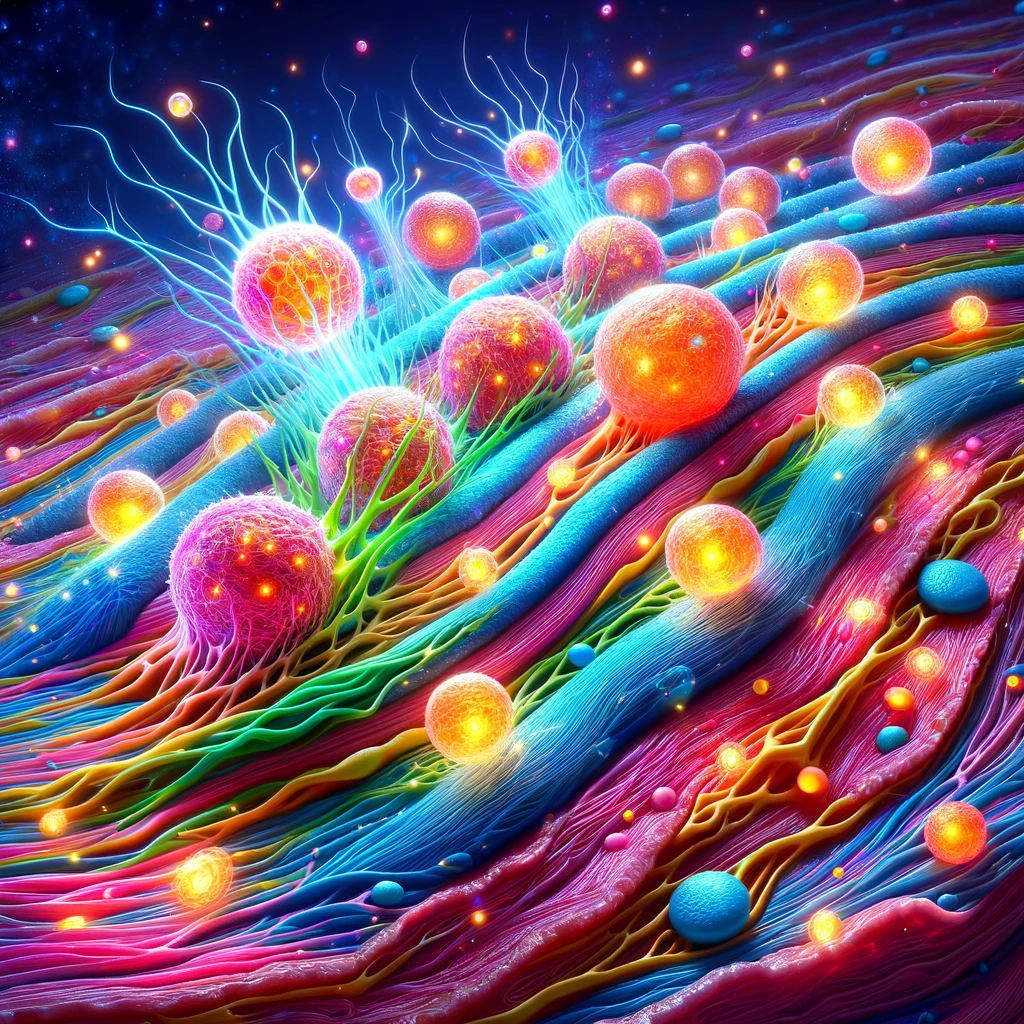Definition
Fibroblasts, specialized cells in connective tissue, play a vital role in maintaining skin structure and elasticity by synthesizing and secreting extracellular matrix proteins like collagen and elastin.
Expanded Explanation
Fibroblasts are vital in skin health, wound healing, and tissue repair. They contribute to forming the skin’s structural framework and produce essential proteins that maintain its integrity and suppleness. These proteins are crucial to skin renewal, repair, and regeneration. By making them, fibroblasts help keep the skin looking healthy and youthful.
Function in Skin Health
Fibroblasts synthesize and secrete several extracellular matrix components, including collagen, elastin, and proteoglycans. As we age, the activity level of our fibroblasts diminishes, which leads to a decrease in the production of collagen and elastin. This results in wrinkles and sagging skin. Proteins provide the skin with structural support and elasticity, contributing to its firmness and flexibility.
Role in Wound Healing and Tissue Repair
Fibroblasts are critical for wound healing and tissue repair. When the skin is injured, fibroblasts migrate to the affected area and increase, producing collagen and other extracellular matrix components to rebuild the damaged tissue. Fibroblasts secrete growth factors that stimulate the formation of new blood vessels, aiding in the healing process.
Examples
Example 1: Skincare products can improve skin firmness and reduce wrinkles by stimulating fibroblast activity. Ingredients like vitamin C and peptides boost collagen and elastin production. These ingredients help the skin retain its elasticity and reduce the appearance of fine lines.
Example 2: Fibroblast growth factors are used in some advanced wound care treatments to accelerate the healing process and minimize scarring.
Related Terms
Collagen, the most abundant protein in the human body, strengthens and adds elasticity to tissues, including skin. It’s essential in connective tissues like skin, bones, and joints. Our body produces less of it as we age, leading to visible aging signs such as wrinkles and sagging skin.
Elastin, a fibrous protein in connective tissues, imparts elasticity and flexibility to skin and blood vessels. It’s crucial for the skin’s stretchability and return to its original shape, complementing collagen to maintain the skin’s integrity and youthfulness. However, elastin production diminishes with age, reducing elasticity and developing wrinkles and sagging skin.
Visual and Reading Aids
External Resources
Frontiers in Physiology: This article analyzes fibroblasts’ role in wound healing and tissue remodelling, emphasizing their importance in all three phases of wound healing (WH). They coordinate the repair process, enhance immune response, regulate immune cell recruitment and transition from inflammation to proliferation for healing.
PubMed: This resource discusses how the accumulation of senescent dermal fibroblasts significantly enforces skin aging. Various stressors damage these fibroblasts internally and externally, and as they accumulate, they release proinflammatory and tissue-degrading factors, spreading senescence and skin aging.
Related Articles
How to Boost Elastin Production for Firmer, More Youthful Skin: The article “How to Boost Elastin Production for Firmer, More Youthful Skin” discusses the importance of elastin. This protein maintains skin firmness and youthfulness. It notes that the skin’s natural ability to produce elastin diminishes with age, leading to sagging, wrinkles, and loss of elasticity. The article explores ways to enhance elastin production for youthful skin, including skincare ingredients, lifestyle changes, and professional treatments.
The Science of Skincare: Understanding Collagen and Elastin: The article “The Science of Skincare: Understanding Collagen and Elastin” focuses on the vital roles of collagen and elastin in maintaining the skin’s appearance and health. It delves into the science of these essential proteins, discussing their functions in the skin and ways to support their synthesis for achieving radiant and supple skin.


